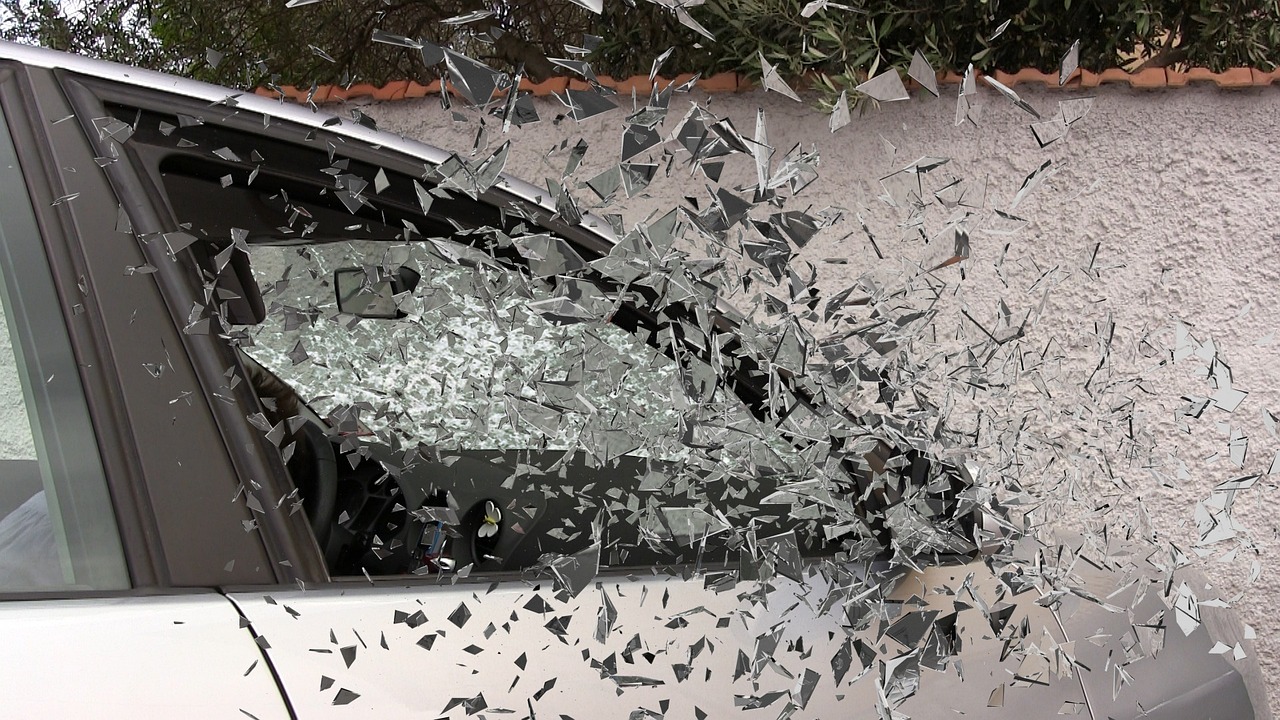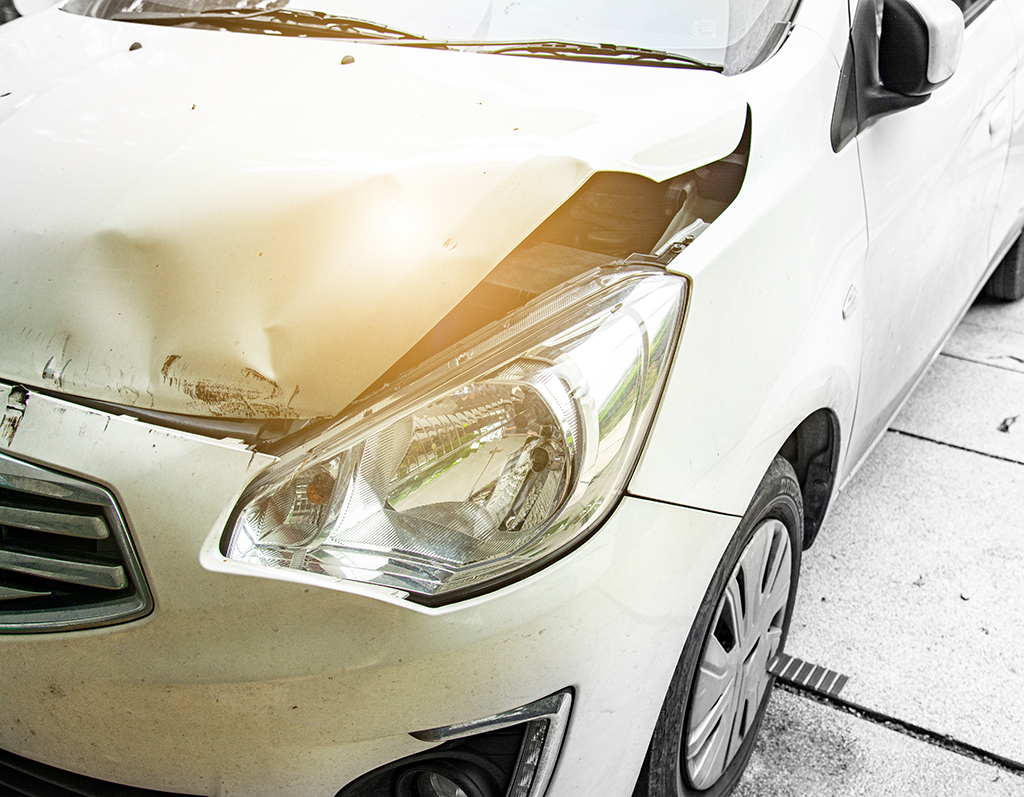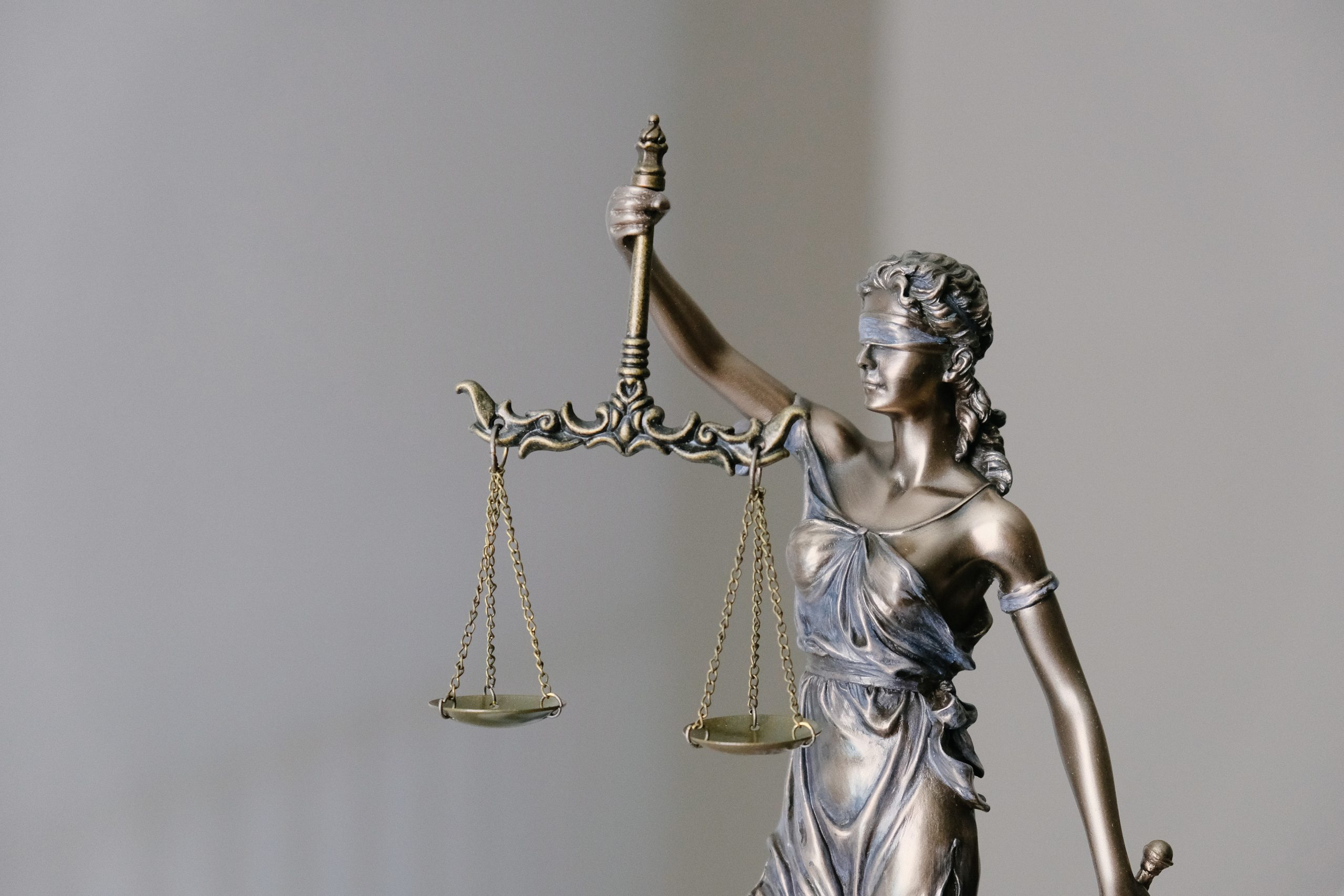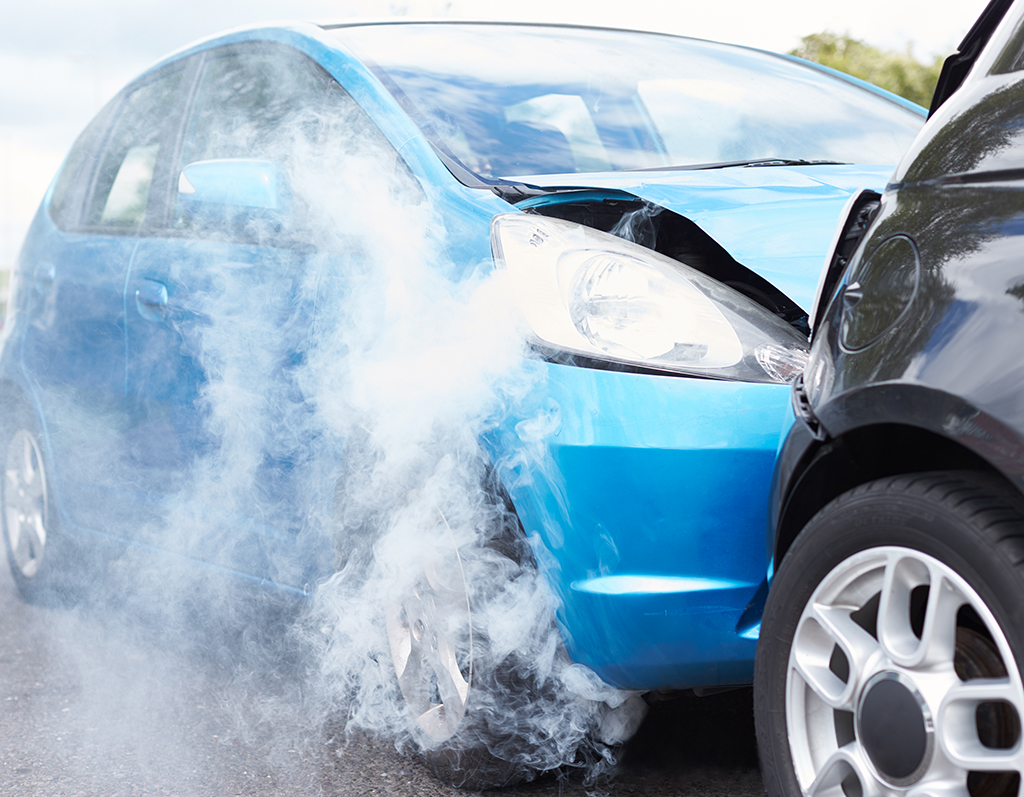Car accidents are distressing events that can have lifelong emotional and psychological effects on those involved. While the physical injuries may heal, the mental scars can stay, affecting people’s daily lives and welfare. Understanding these effects and diagnosing the importance of seeking professional help is vital for recovery.
Signs of PTSD After a Car Accident
PTSD is a disorder that can progress after experiencing or seeing a traumatic event. Symptoms of PTSD following a car accident may include:
Re-experiencing the trauma
Avoidance
Negative changes in thinking and mood
Increased arousal and reactivity
Seeking Professional Help
Identifying the signs of PTSD and other mental health issues is the first step towards healing. It’s important for individuals affected by a car accident to seek professional help if they experience insistent psychological symptoms. Mental health professionals, such as psychologists and psychiatrists, can provide effective treatments for PTSD and other related conditions.
Treatment selections may include:
Cognitive Behavioral Therapy (CBT
Eye Movement Desensitization and Reprocessing (EMDR
Medication
In addition to professional treatment, support from family, friends, and support groups can play a critical role in the recovery process. Sharing experiences with others who have gone through similar situations can provide comfort and understanding.
The emotional and psychological aftermath of a car accident can be just as significant as the physical injuries. It’s important for survivors to acknowledge their feelings, understand that their reactions are normal, and decide when to seek professional help. Addressing the psychological impacts of car accidents can lead to better results and a healthier, tougher recovery.
The Reality of Car Accidents: Understanding the Impact and How to Stay Safe
Statistics and Facts
Recent statistics highlight the alarming prevalence and seriousness of car accidents. For instance, the World Health Organization (WHO) reports that road traffic injuries are the leading cause of death for children and young adults aged 5-29 years globally. Every year, approximately 1.35 million people lose their lives on the road, and millions more suffer injuries that often lead to long-term disabilities. These numbers not only shed light on the human cost of car accidents but also underscore the economic burdens they impose on individuals, families, and nations.
Common Causes
Understanding the common causes of car accidents is the first step toward prevention. Key contributors include:
- Distracted Driving: Activities such as texting, eating, or using a GPS can divert a driver’s attention from the road, increasing the risk of an accident.
- Speeding: Exceeding speed limits or driving too fast for conditions is a leading cause of crashes, reducing the driver’s ability to steer safely around curves or objects in the roadway.
- Driving Under the Influence: Alcohol and drugs impair cognitive and motor functions, significantly increasing the likelihood of an accident.
- Fatigue: Driving while tired can be as dangerous as driving under the influence, affecting reaction times and decision-making abilities.
Safe Driving Practices
Adopting safe driving practices is crucial for preventing accidents. Recommendations include:
- Maintain a Safe Distance: Keep a safe following distance from the car in front to allow enough time to react in case of sudden stops.
- Obey Traffic Laws: Adherence to speed limits, traffic signals, and road signs is fundamental to road safety.
- Avoid Distractions: Focus on the road at all times and use hands-free devices if necessary.
Regular vehicle maintenance is essential to ensure safety on the road. Key maintenance tasks include checking tire pressure and tread depth, ensuring brakes are functioning correctly, and keeping headlights and signal lights clean and operational.
What to Do If You’re Involved in a Car Accident
Immediate Steps
If you’re involved in a car accident, take the following steps:
- Check for Injuries: Assess yourself and passengers for injuries. Call emergency services if needed.
- Move to a Safe Location: If possible, move the vehicle to the side of the road to avoid obstructing traffic.
- Call Emergency Services: Report the accident to the police and request medical assistance if there are any injuries.
- Exchange Information: Collect names, contact details, insurance information, and vehicle details from all parties involved.
Document the scene with photos and notes, and notify your insurance company as soon as possible. Consider consulting a legal professional to understand your rights and obligations.
Resources for Accident Victims
Support Services
Numerous resources and support services are available for accident victims, including:
- Medical Assistance: Immediate and follow-up medical care is crucial for physical recovery.
- Legal Aid: Legal advice can help victims understand their rights and navigate insurance claims.
- Emotional Support: Counseling and support groups can assist with the psychological impact of accidents.
Physical and emotional recovery can take time. Seek professional medical and psychological help, stay connected with loved ones, and allow yourself time to heal.
When and Why You Need a Personal Injury Attorney: Recognizing Crucial Signs
Suffering a personal injury can be a life-altering experience, impacting not only your physical well-being but also your financial stability and overall quality of life. In this blog, we’ll explore specific scenarios and signs that indicate that hiring a personal injury attorney is not just beneficial but crucial. Understanding these signs can help you navigate the legal complexities that often accompany personal injury cases, ensuring you receive the compensation you rightfully deserve.
Serious Injuries Require Serious Help:
If you’ve sustained severe injuries that result in extensive medical treatment, surgeries, or long-term care, it’s a clear sign that you need the expertise of a personal injury attorney. They can help you navigate the legal process while you focus on your recovery, ensuring your case reflects the full extent of your injuries.
Disputed Liability:
When the responsible party denies fault or disputes liability, it’s time to bring in a personal injury attorney. They excel at gathering evidence, interviewing witnesses, and building a strong case to establish fault and ensure the responsible party is held accountable.
Insurance Company Challenges:
Dealing with insurance companies can be challenging, especially when they offer low settlements or outright deny your claim. A personal injury attorney can negotiate with insurers on your behalf, ensuring you’re not taken advantage of and that you receive a fair settlement.
Long-Term or Permanent Disabilities:
If your injuries result in long-term or permanent disabilities that affect your ability to work and enjoy life, a personal injury attorney becomes crucial. They can help you seek compensation for future medical expenses, lost earning capacity, and emotional distress.
Multiple Parties Involved:
If multiple parties are involved in your injury, determining liability can become complex. A personal injury attorney can untangle this web of responsibility, ensuring all culpable parties are held accountable and maximizing your chances of receiving full compensation.
Statute of Limitations Looming:
Personal injury claims are subject to a statute of limitations, which means there’s a limited timeframe within which you can file a lawsuit. If this deadline is approaching, consulting with a personal injury attorney promptly is essential to protecting your legal rights.
Complex Legal Rules:
Personal injury law is intricate, and understanding the legal nuances can be challenging for a non-legal professional. An attorney can guide you through the complexities, ensuring that you make informed decisions and avoid potential pitfalls.
Negotiations and Settlements:
Effective negotiation is a key skill in securing a fair settlement. Personal injury attorneys are experienced in negotiating with opposing parties and their legal representatives to achieve the best possible outcome for your case.
Trial Preparation:
If your case proceeds to trial, you’ll need a skilled personal injury attorney to prepare a robust legal strategy, present evidence, cross-examine witnesses, and advocate for your rights in court.
Peace of Mind and Support:
Beyond legal expertise, hiring a personal injury attorney provides peace of mind and emotional support during a challenging time. They handle the legal complexities, allowing you to focus on your recovery with confidence.
Recognizing the signs that indicate when you need a personal injury attorney is crucial for ensuring that your rights are protected and that you receive fair compensation for your injuries. From serious injuries to disputed liability and complex legal rules, these scenarios underscore the importance of having a skilled advocate by your side. A personal injury attorney not only brings legal expertise to your case but also provides the support and guidance needed to navigate the challenging journey toward recovery.
If you’ve been injured due to the negligence of others, we are here to help you heal and recover. We are here to help you obtain the settlement you deserve. Reach out to 1-833-DARFOOR.
Parking Garages: Responsible for Damaged or Stolen Cars? Considering Liability and Safety
Parking garages are an important piece of city planning because they make it easy to park cars in high-density urban areas. However, worries concerning the security of garage-stored vehicles have persisted for a long time. The subject of whether or not a parking garage is liable for damage or loss to vehicles, from dings and scratches to complete theft, is an important one to consider. We’ll discuss the legal and practical implications of this topic, including who’s responsible, how to keep yourself and your car safe, and what steps you may take.
Realizing Responsibility
It might be difficult to sort out who is responsible when a car gets broken into or stolen from a parking garage. A bailment arrangement is typically in place in parking garages. In a parking garage, the car’s owner enters into a bailment with the parking garage’s operator, transferring control of the vehicle to the latter for the duration of the parking session and returning it to the former after the parking session ends.
To limit their legal obligation in the event of theft or damage, parking garages frequently include disclaimers, terms of service, and liability waivers. However, this does not necessarily release parking garages from responsibility. The garage’s ability to be held liable is heavily dependent on the quality of care and security it provides, as well as on applicable local legislation.
Liability Affecting Factors
Parking garages are tasked with securing vehicles to an acceptable standard. It’s important to have things like cameras, lights, guards, and locks in place. The garage’s responsibility may rise if proper safety measures aren’t implemented.
If a parking lot doesn’t take reasonable precautions to avoid harm, they can be negligent. A garage could be found negligent if it routinely leaves its gates unlocked, allowing vehicles to be stolen.
Disclaimers and other warning signs may help restrict your responsibility, but they won’t protect you completely if you’re careless or malicious.
Parking garage liability laws might differ by jurisdiction, thus it’s important to check the relevant local regulations. Limitations on who is responsible for what may be imposed by local law.
Safeguarding Your Car
While the issue of liability is certainly crucial, car owners also have a part to play in keeping their vehicles safe in garages:
· Pick carefully: only use garages that have earned a solid reputation for safety and customer satisfaction. Before opting to park there, find out more about the facility’s safety features.
· As proof, take pictures of your car in its current state, including any blemishes, before parking. If you ever require proof that damage occurred to your car while it was parked, this evidence will be invaluable.
· Never leave anything of value or sentimental value in plain sight inside your vehicle. The temptation to steal is diminished as a result.
· Always use a lock and activate any anti-theft features on your automobile.
· Review your insurance policy to learn about the protections it provides in the event of loss or damage. Accidents that happen in a parking garage may also be covered by some policies.
Conclusion
Complex considerations, such as the garage’s security procedures, negligence, and local regulations, all play a role in determining who is responsible for automobiles that are damaged or stolen while parked there. Despite their best efforts to reduce their responsibility through legal fine print, parking garages must still guarantee some level of safety for their customers. Automobile owners can further safeguard their investments by dealing only with trustworthy repair shops, keeping detailed records of their vehicles’ histories, and employing other sound security measures. The risks connected with parking in urban settings can be reduced through a combination of responsible garage management and careful vehicle ownership.
T-Bone Accidents: The Unexpected Side of Intersection Dangers
Imagine driving through a busy intersection, surrounded by the hustle and bustle of city life. Suddenly, out of nowhere, another vehicle crashes into the side of your car, forming a T-shape. This terrifying scenario is known as a T-bone accident, and it’s one of the most common types of collisions on the road. In this blog post, we’ll explore the ins and outs of T-bone accidents, their causes, the potential injuries involved, and how to protect yourself in such situations.
Understanding T-Bone Accidents:
T-bone accidents, also called side-impact collisions, occur when the front of one vehicle strikes the side of another at a perpendicular angle, resembling the shape of the letter “T.” These accidents often happen at intersections, where drivers fail to yield the right-of-way, ignore traffic signals, or misjudge the speed of oncoming vehicles. The impact from a T-bone accident can cause significant damage to both vehicles involved and can lead to severe injuries or even fatalities.
Causes of T-Bone Accidents:
Several factors contribute to T-bone accidents. One common cause is when a driver runs a red light or fails to stop at a stop sign, colliding with a vehicle traveling through the intersection. Distracted driving, such as texting, talking on the phone, or adjusting the radio, also plays a role in T-bone accidents. Additionally, poor visibility, slippery road conditions, or a driver’s inability to judge the speed of an approaching vehicle can contribute to these collisions.
The Impact on Injuries:
T-bone accidents can result in a wide range of injuries, depending on the force of the impact and the safety features of the vehicles involved. Occupants on the side of the vehicle that is struck are particularly vulnerable to severe injuries, as the impact directly targets their side. Common injuries from T-bone accidents include head trauma, spinal injuries, broken bones, internal organ damage, and whiplash. These injuries may require extensive medical treatment, and rehabilitation, and can have long-lasting effects on the victim’s physical and emotional well-being.
Determining Fault in T-Bone Accidents:
Determining fault in T-bone accidents can be complex, as it requires a thorough investigation into the circumstances surrounding the collision. Eyewitness accounts, traffic camera footage, and police reports are essential in piecing together what happened. In some cases, both drivers may share some degree of fault, such as when one driver fails to yield, but the other was speeding. Insurance companies and legal professionals carefully assess the evidence to establish liability and determine the appropriate compensation for the injured party.
Protecting Yourself:
While we can’t control the actions of other drivers, there are steps we can take to protect ourselves from T-bone accidents. First and foremost, always obey traffic laws and be vigilant at intersections. Make sure to check for any oncoming traffic before proceeding, even when you have the right-of-way. Defensive driving techniques, such as maintaining a safe speed and keeping a watchful eye on surrounding vehicles, can help you anticipate potential hazards and react accordingly.
Conclusion:
T-bone accidents are a significant concern on our roads, posing a threat to both drivers and passengers. By understanding the causes and potential consequences of T-bone accidents, we can take proactive measures to minimize the risk. Remember, defensive driving, adhering to traffic laws, and staying alert is crucial in avoiding T-bone accidents. If you find yourself involved in such an accident, seek medical attention immediately and consult with legal professionals to ensure your rights are protected. Together, we can strive for safer intersections and reduce the occurrence of T-bone accidents on our roads.
Consult with Darfoor Law Firm
An experienced lawyer provides you with the opportunity to discuss your situation and gain clarity on your potential avenues for seeking compensation. It’s your opportunity to ask questions, assess the strength of your case, and decide if legal representation is beneficial for you.
If you or a loved one has been injured in an accident due to someone else’s carelessness or fault, Darfoor Law Firm is here to provide support and suggest the best course of action.
Accidents can be difficult to deal with; that is why having someone who understands and empathizes is so important.
Call us at +1-833-DARFOOR for a complimentary consultation and case evaluation.
Head-on collision – the most dangerous road accident
With an estimated 1.35 million deaths per year, car accidents are the leading cause of death worldwide. Distracted driving, drunk driving, and reckless driving are all factors that contribute to a number of these reported car accidents. The most dangerous road accident is a head-on collision. It is a traffic collision where the front ends of two vehicles such as cars, trains, ships, or planes hit each other when traveling in opposite directions. This is what we call a frontal collision. Although one may survive a head-on collision it would still definitely cause fatal injuries.
There are several steps you can take to avoid this kind of accident:
Obey traffic laws: When changing lanes or making a turn, use your turn signals and obey traffic signs as well as the speed limit.
Avoid distractions: Do not use your phone, eat, or engage in other activities that take your attention away from the road. Distracted driving is one of the major causes of car accidents, mind you.
Keep a safe distance: Leave enough space between your vehicle and the one in front of you to allow for sudden braking.
Be aware of your surroundings: Keep an eye out for other vehicles, pedestrians, and obstacles on the road. Animals may usually appear out of nowhere so be extra cautious.
Avoid alcohol or drugs: Never drive under the influence of alcohol or drugs, as it impairs your ability to make good decisions and react quickly on the road.
Check your vehicle: Regularly maintain and check your vehicle, including brakes, tires, lights, and signals, to ensure it is in good working condition. Be mindful.
Be extra cautious in bad weather: Slow down and be extra cautious when driving in bad weather conditions such as rain, snow, or fog. You need to be more sensitive to your surroundings as your sense of sight and sense of hearing may be limited during these instances.
Plan your trip: Check the traffic and weather conditions before leaving, plan your route, and allow for extra time to reach your destination.
Make sure you got enough rest and sleep before driving. Lack of sleep may impair your driving skills so getting a good sleep the night before is important when you’re planning to get on the road today.
By following these steps, you can avoid any collisions on the road that may lead to lethal personal injuries.
If you’ve been injured in a car accident, call us at 1-833-DARFOOR and we are always at your legal service.
How to Avoid Raging Drivers in Florida
Road rage happens because of frustrations while driving such as being cut off by another driver, being forced to sit behind a slow vehicle, and many more. It is normal to be frustrated and angry with such situations but you need to make sure that you handle it properly. Road rage can escalate quickly and may cause accidents on the road. Below are things to remember if you are dealing with raging drivers:
Avoid making any gestures or signals back. Make no rude or obscene gestures toward the other driver, such as shaking your fist or flipping them off. These crude gestures can exacerbate road rage and increase the likelihood that the other driver will make a careless decision that leads to an accident.
Get out of the way. When you notice a driver behaving aggressively around you, try to move out of the way. Allow them to pass you by changing lanes. Allow them to pass, if necessary, by pulling over to the side of the road.
Keep calm. You may find it difficult to avoid responding once the cycle of rage has begun. To retaliate for the aggression directed at you, you may accelerate your own vehicle or cut the other driver off in traffic. However, by not responding, you can prevent an angry outburst from becoming a more serious incident.
Pay attention to a driver following you. Is there a raging driver on your tail? To keep yourself safe from a raging driver, you may want to avoid going to an isolated destination or leading the driver straight to your home. If you feel worried about how a driver might treat you after an incident of road rage, change your plans and head to a place where you can count on assistance if needed.
Do not get out of your car. If possible, avoid getting out of your vehicle. You do not want to start a physical confrontation, and your vehicle can offer some protection from the raging driver.
Summon the police if needed. If you believe an aggressive driver is endangering you or others, call the police, or if an aggressive driver follows you and gets out of the car to threaten you. Before using your cell phone or voice recognition technology to call 911, make sure you stop in a safe location.
If you or a loved one has suffered an injury because of someone else’s road rage, evidence of road rage can aid in the prosecution of the other driver in an accident. A lawyer can assist you in better understanding the compensation you are entitled to as a result of your accident and in pursuing that compensation, including gathering evidence of road rage in the other driver.
Contact Darfoor Law Firm at +1-833-327-3667 for a free consultation and case evaluation.
Safety Tips for Bicyclists in Florida
A lot of residents in the State of Florida prefer and enjoy bicycling because it is a form of excellent exercise, it is environmentally friendly, and the year-round weather here provides an ideal setting for the said activity. But unfortunately, bicycling accidents still happen around the US and Florida is consistently one of the states that contribute to the number of bicycle accidents in national rankings. Because of this, it is important that every bicyclist understand safety measures he or she can undertake to help stay safe on the road. Below are safety measures that bicyclists should do to help themselves stay safe on the road:
Before leaving, it is best to:
1. Map out a route in advance
2. Wear a helmet that fits properly
3. Make sure your bicycle is in good working order
4. Never drink or do drugs before riding your bicycle
5. Try to avoid nighttime rides or riding in bad weather
6. If you must ride at night, wear reflective gear, or attach panels to your clothes
7. Fully charge your cell phone so that you have it if an emergency arises
While on the road, you should:
1. Obey signs and traffic signals
2. Stay in the designated bicycle lane
3. Always travel in the same direction as cars
4. Lookout for and avoid road hazards like potholes and cracked concrete
5. If wearing headphones, ensure you can still hear what is happening around you
6. Use hand signals and call out before changing lanes or turning
7. Avoid distracting behavior such as using your cell phone while riding
If you or a loved one has been injured in a bicycle accident due to the fault of someone else, Darfoor Law Firm is here to help you and give you the best service you deserve. Accidents can be tough to deal with and you need someone who will understand, sympathize, and fight for you. You may contact us at +1-833-327-3667 for a free consultation and case evaluation.
What to Do if You are involved in a Rental Car Accident during the Holidays
Rental cars are vehicles that are rented from a national or local company that provides cars for daily or weekly use. A person borrows a car for a set period of time and then returns it with no ownership of the vehicle. When there is an auto accident involving a rental car, the at-fault driver’s insurance company usually pays for the rental car’s damages. If the person driving the rental car was at fault in the accident, their insurance will usually cover it. What the insurance company will cover depends on whether the injured person obtained additional coverage when renting the car from the company. Many times, the additional coverage looks first to the person’s primary insurance and only steps in when that policy is insufficient to cover the loss.
Anyone dealing with any type of accident involving a rental car should keep in mind that each case is fact specific and understand all the insurance policies that are available. A car accident attorney can also be a great key in determining what insurance is available in each case.
Fact Patterns Surrounding Florida Accidents
Florida has a large tourism industry. This means that the number of people who rent cars are high especially during the holiday season. Because of that, one major fact pattern in these accidents is that the at-fault driver is driving a rental car. Many rental car accidents occur as a result of drivers who are unfamiliar with the local streets and traffic patterns and failing to pay close attention.
Rental car accident cases are no different than any other case. When a car collides with another car, pedestrian, motorcycle, bicyclist, or tractor-trailer, it can involve rear-ending collisions, side-impact collisions, rollovers, and head-on collisions. Injuries can include broken bones, internal organ damage, spinal cord injuries, and traumatic brain injuries, depending on the type of accident that occurred.
As with any other type of car accident claim, when a person is injured due to another’s negligence, they can bring a claim against the at-fault driver. A car accident attorney from Darfoor Law Firm can be a great help in determining fault and bringing the right claim against the appropriate party.
Whether you were in an accident while driving a rental car or were in an accident caused by someone driving a rental car, it is critical to understand your rights. However, navigating rental car insurance can be difficult. You may contact Darfoor Law Firm and we will give you the best service you deserve. Call us at +1-833-327-3667 for a free consultation and case evaluation
THINGS TO KNOW ABOUT A FREE CONSULTATION WITH A PERSONAL INJURY LAWYER
If you or a loved one have been injured due to someone’s negligence, having an attorney can be a great help in getting the justice and compensation to which you are entitled to. The first step to getting compensation after your accident, and after you have sought medical attention, is scheduling a consultation with your chosen lawyer. Below are things you should know about a free consultation with a personal injury attorney:
You Will Have the Time to Know the Attorney
An initial consultation is not only about the attorney getting information about your case, but also, about you learning about the attorney. This will be the perfect time to get to know them and decide whether you want to work with them or not. You can freely ask questions about the attorney’s experience in his/her field. You should also take the time and think if you are comfortable with the attorney handling your case. Once you feel like you can trust the attorney and have the right answers to your questions, you can now determine if the attorney you are having a consultation with is the right one for you.
Do not feel pressured and obligated to hire an attorney after a free consultation. Most personal injury attorneys offer no-obligation consultations, so, at the end of the day, you still have the choice to choose which one you want to work with.
Use Your Time Wisely
Although the consultation is free, there is a big chance that the consultation time will be limited. It is best that you make good use of every minute and arrive at your consultation early and prepared. You can prepare your questions in advance. During the consultation, feel free to ask as many questions as possible but prioritize the important ones.
Provide A Detailed Statement of Your Accident
Making good use of your consultation time means you give relevant facts and good details of your accident to the attorney. This will help the attorney evaluate your case and in turn, help you to get compensation and justice. The attorney will be able to assess the strengths and weaknesses of the case if you give accurate details.
Ask About Fees
It is also very important to discuss fees with the attorney to avoid a surprise or disagreement as the case pursues. Darfoor Law Firm works with a contingency fee. A contingency fee means an attorney works in return for a percentage of a settlement, verdict, or jury award. If a personal injury attorney works on a contingency fee basis, the attorney only gets paid if a client receives a settlement, verdict, or jury award.
Discuss Statute of Limitations
It is imperative to inquire about the statute of limitations if your injuries occurred some time ago. If it has been some time since your injuries, you may want to know if you are still eligible to file a claim and receive compensation.
Darfoor Law Firm specializes in Personal injury Claims ranging from car accidents, slip-and-fall, and other injuries. Do not hesitate to call for help if you need it. Contact Darfoor Law Firm and have a representative that will understand, sympathize, and help you fight for the compensation you deserve. Call us at +1-833-327-3667 for a free consultation and case evaluation.











